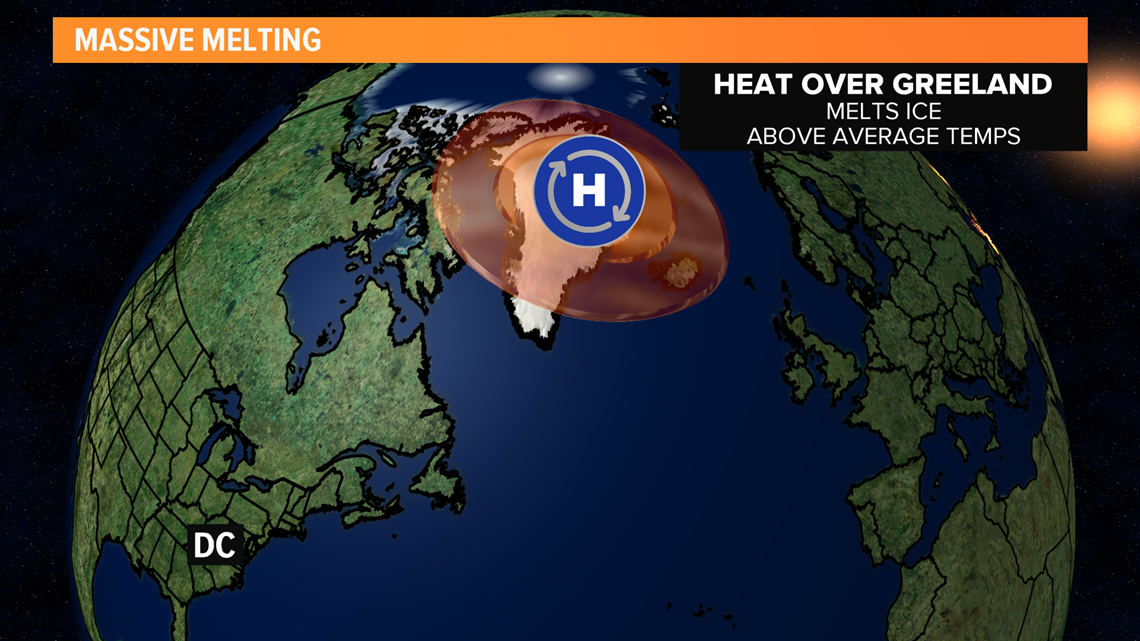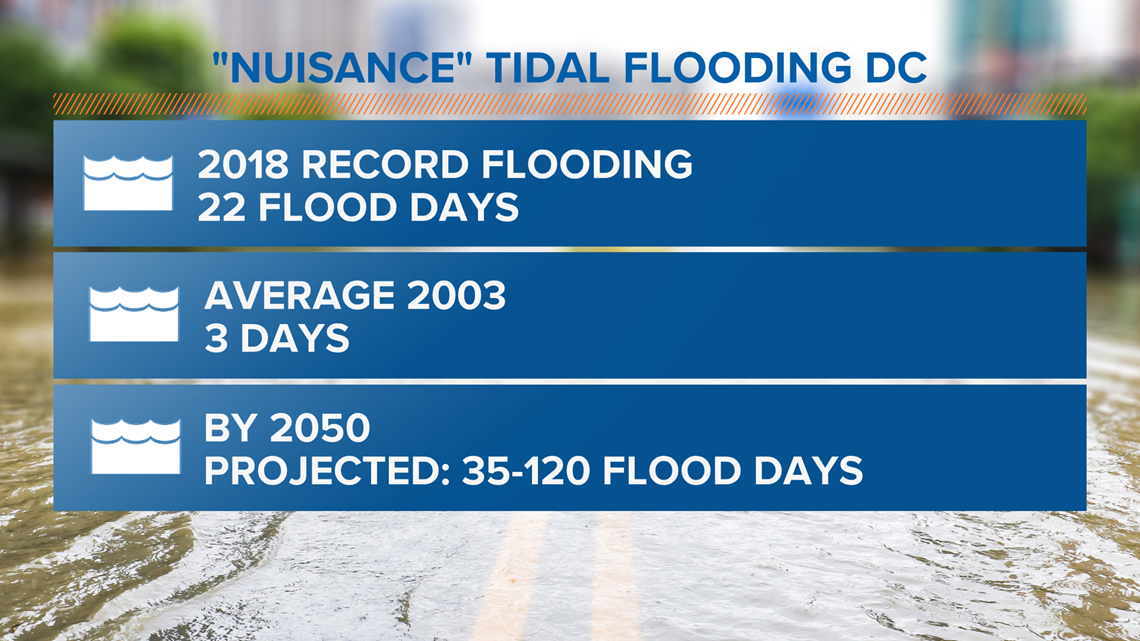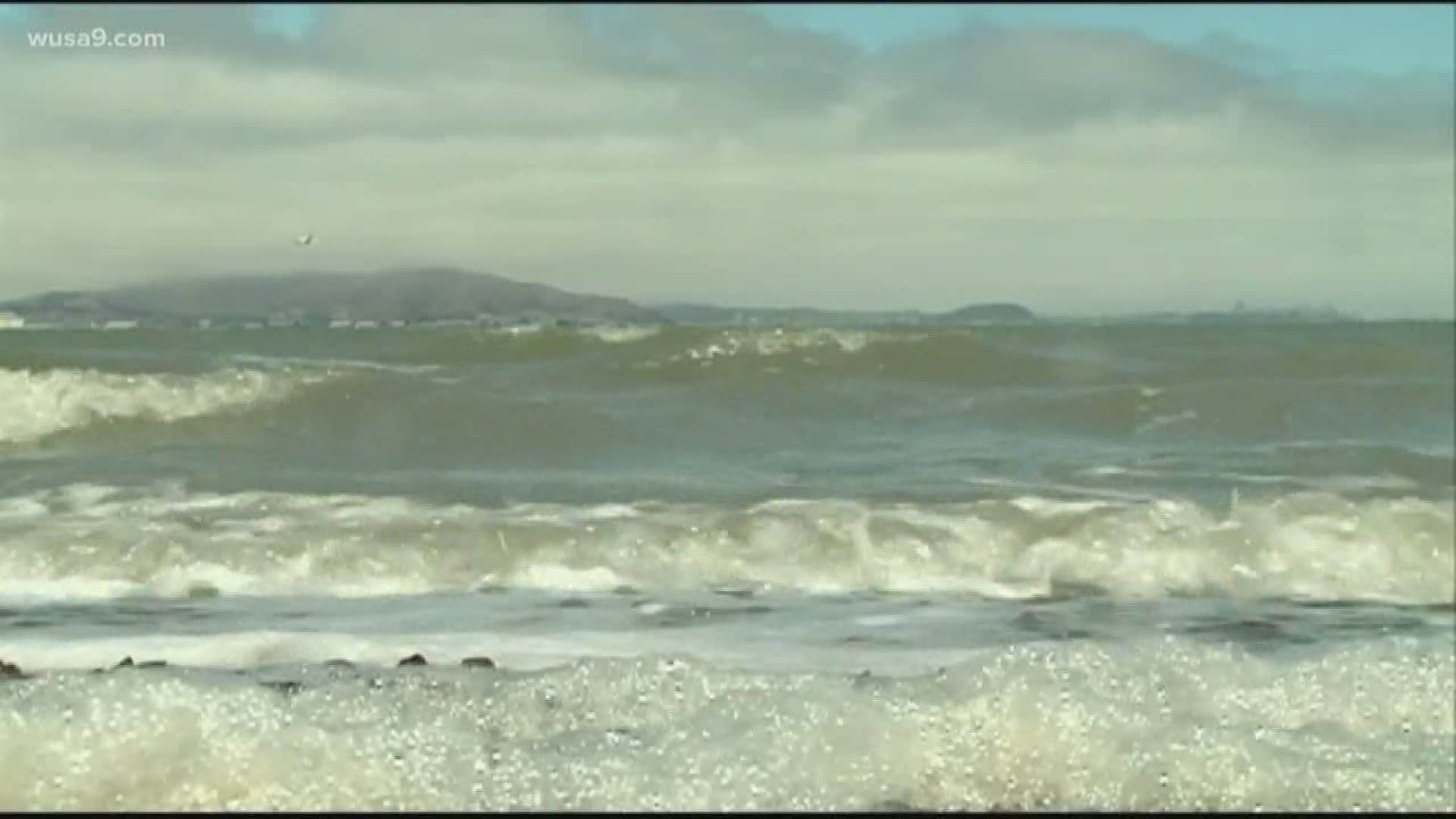WASHINGTON — It's a phenomenon that has scientists astonished -- the massive melting of ice in Greenland. On July 31, 11-billion tons of ice melted on the island, which is mostly covered in ice.
Overall, in July, about 197 billion tons of ice melted in Greenland. Scientist said that it's about 36 percent more of what is lost in the entire melting season.
Scientists at the Danish Meteorological Institute told CBS News that one billion tons of ice loss is equivalent to about 400,000 Olympic-sized swimming pools. Roughly 80 percent of Greenland's surface is covered in ice. If all of the ice on Greenland were to melt it would raise the sea level by 20 feet, according to the National Snow and Ice Data Center.
Why Did It Melt?
The heatwave that swept over Europe moved over Greenland. A dome of high pressure dominated the area causing above average temperatures which aided in the melting.


Why Does It Matter?
Melting ice sheets can lead to sea level rise. Sea level rise can lead to more coastal flooding, higher storm surge from tropical cyclones and a disruption of marine life.
Let's discuss coastal/tidal flooding. Sea level rise will contribute to more tidal flooding days, including in the D.C. Metro, Baltimore and Annapolis. In 2018, D.C. experienced a record number of tidal flooding or "nuisance flooding" days, according to a NOAA State of High Tide Flooding Report. And it's projected that it will become more frequent in time.
Nuisance flooding is defined by the National Ocean Service as "High tide flooding which causes public inconveniences as frequent road closures, overwhelmed storm drains and compromised infrastructure."
It's typically a few inches to a foot or so in depth. It can occur on bright, sunny days. In the last 30 years it has increased by 100 percent.


The National Ocean Service notes that the global sea level has been rising since the last century and the rate is increasing. Sea level is caused by ice sheets and glaciers melting and by thermal expansion as the ocean warms. Water expands as it warms.
Millions of people along coastal communities in the United States are at risk of flooding as the sea level continues to rise. The Sea Level Rise Viewer shows how different scenarios play out across the country.

